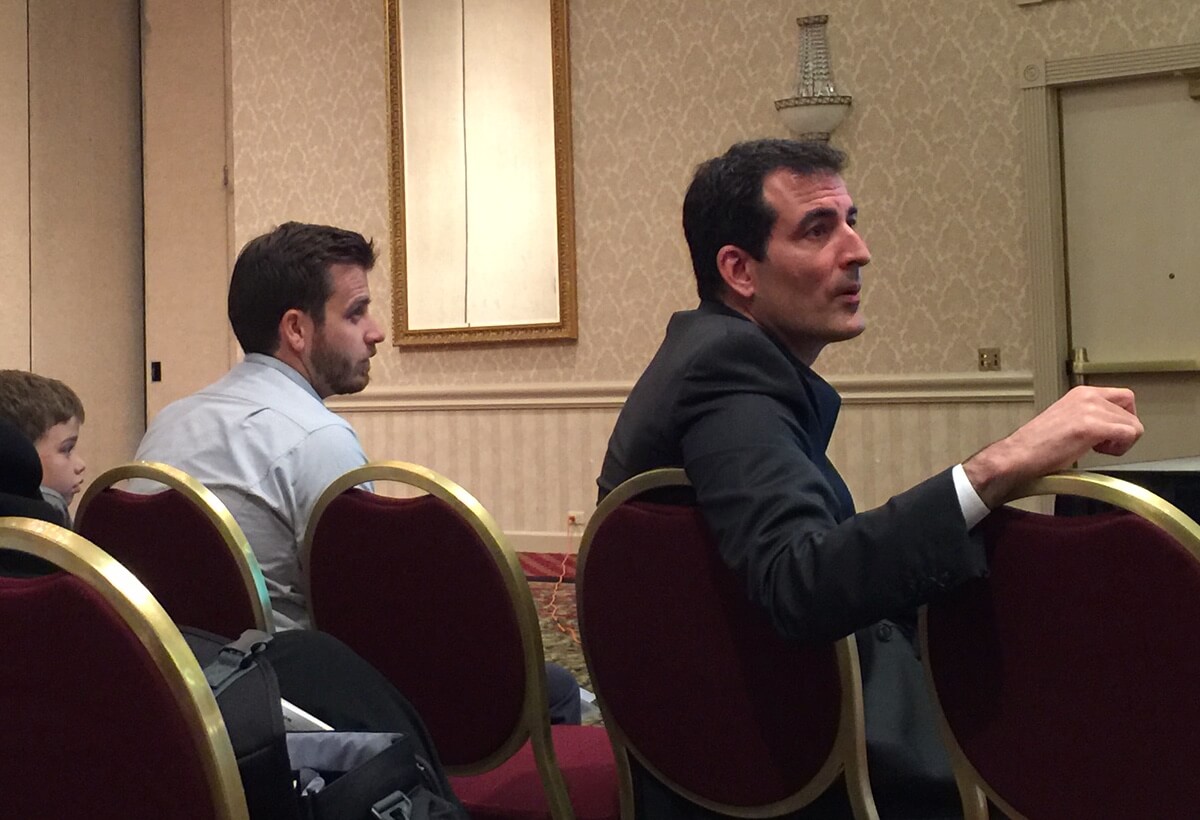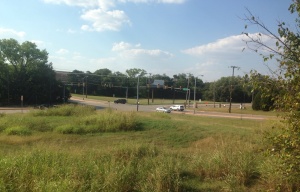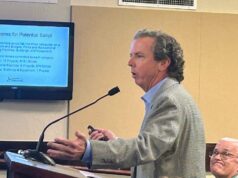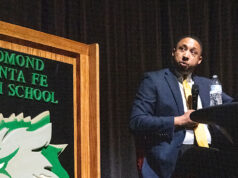In his appeal to voters assembled Tuesday night for a town hall meeting on the 2017 general obligation bond issue, Oklahoma City Councilman Ed Shadid extolled public involvement in planning bond allocation — and the importance of having constituents count jelly beans.
“This is one of my favorite sociology experiments,” Shadid said as he opened the meeting at the Tower Hotel in Oklahoma City. “It was called the jelly bean experiment … and it’s been replicated over and over and over.”
Shadid explained a 1987 examination by investment theorist Jack Treynor in which a class of 56 students estimated the number of jellybeans in a jar. When Treynor averaged the responses, the students came up with 871 — just 21 more than the actual amount — and only one student came up with a closer estimate.
The point of the experiment, Shadid said, was to illustrate how important it was to reach out to constituents to determine the exact ways to improve the city’s infrastructure.
“If you have the maximum number of people look at the question, you tend to get the best answer,” he said.
Oklahoma City’s general obligation (GO) bond issue comes up for a vote every 10 years, on the sevens, and is responsible for funding improvements to the city’s operations and infrastructure. OKC residents did not pass a bond from 1974 to 1995, which city officials have said caused a significant backlog of projects.
According to finance director Craig Freeman, bond projects are grouped together in propositions and the bonds are repaid through property taxes. These projects include traffic, drainage, parks, fire, police, libraries, city facilities, public transit, economic development, and streets and bridges (that last one being particularly relevant after a truck collided with the May Avenue bridge over Northwest Expressway on May 19).
“In the state of Oklahoma, we are the only state in the country where cities don’t have access to property tax for operations,” Freeman said. In effect, the cities must issue GO bonds, which are then repaid over 20 years.
Shadid presented instances from the 2007 GO bond issue in which infrastructural upgrades succeeded in improving walkability and traffic flow, such as the intersection of Northwest 7th Street and Hudson Avenue in Midtown. He also pointed out blunders, acknowledging that expanding lanes on Northwest 178th Street between May and Portland avenues jumped the gun on the city’s expansion by a few years.

City officials offer seven ‘big ideas’
Following Shadid’s opening presentation, city officials took turns detailing the ways in which the $300 million to $850 million from the 2017 GO bond issue could be applied. Planning director Aubrey Hammontree presented potential growth scenarios for the city, which she predicts will add as many as 300,000 new residents by 2050.
How the funds will be applied, she said, depends on whether Oklahoma City continues to expand outward or if it becomes more concentrated owing to increased infilling and continued redevelopment of central neighborhoods and districts.
Public works director Eric Wenger, Parks & Recreation director Doug Kupper and Central Oklahoma Transportation and Parking Authority (COTPA) administrator Jason Ferbrache presented concepts based on seven categories of improvement, or “big ideas”:
- transportation choice
- housing choice
- healthy citizens
- community attractiveness
- thriving neighborhoods
- efficient development
- maintaining the area’s natural character
The difference between GO bonds and MAPS
But while the 2017 GO bond issue will cover necessary improvements identified by city officials and constituents, the proposed Metropolitan Area Projects (MAPS) 4 plan would cover quality-of-life improvements in the city’s neighborhoods.
RELATED
MAPS 4 could transform Martin Luther King Boulevard by Sandino Thompson
Shadid invited Jonathan Dodson, an Oklahoma City property developer and organizer of MAPS 4 Neighborhoods, to discuss how MAPS 4 will fill in the gaps not covered by the general obligation bond issue. He said that while the first three MAPS initiatives greatly improved some areas of the city, other areas — such as the Capitol Hill district and the northeast side of Oklahoma City — were left wanting. He said he sees MAPS 4 Neighborhoods as an opportunity to improve sidewalk access to shopping, build pocket parks, create public art celebrating the culture and history of neighborhoods, and build protected bike lanes.
“[Former Oklahoma City Planning Director] Russell Claus said before he left that the difference between GO bonds and MAPS is that GO bonds are like making sure the dishes are done and the vacuuming and cleaning,” Dodson said. “MAPS gets to come in and put this great deck on the front of your house or put in this great zip line in your backyard.”
‘Much work still to do’
Dodson said that the efforts will vary from ward to ward, based on the needs of the residents.
While the Oklahoma City Council is considering a MAPS vote in the Nov. 8 general election, Dodson said he supports more time to develop concrete plans for the neighborhoods.
“There is so much work still to do,” he said.
Shadid said that there will be more meetings in every ward to discuss both the GO bond issue and MAPS 4, bringing more voices into the discussion on how Oklahoma City plans for its future.
“I think more people need to be looking at the jelly beans,” Shadid said. “What I’m hoping is that, this time, things will be different, that many more people will be engaged in the process.”























